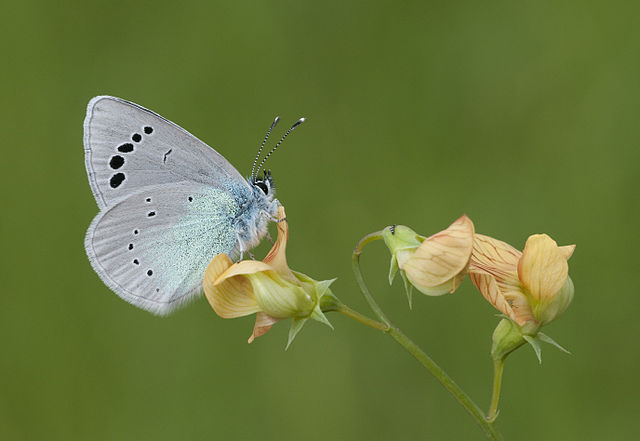The Atlas blue butterfly, which is native to Morocco and Algeria, is an intriguing case study for genetic scientists because the insect’s genome, or the complete set of its genetic makeup, has been sequenced for the first time.
Most butterflies possess around 23 to 24 pairs of chromosomes, but the Atlas blue consists of 229 pairs of chromosomes, which is more than almost any other known insect.
The larger number of chromosomes was caused by the shattering of the butterfly’s genome into tiny pieces over millions of years.
The study also highlights unusual traits of the butterfly’s sex chromosomes; it is much larger than its other chromosomes, the autosomes.
The butterfly’s chromosomes relate to the “fast X effect,” where sex chromosomes evolve and diverge, meaning they separate faster than non-sex chromosomes, distinguishing it from the level of change that other species’ chromosomes undergo. This led to the genes on the sex chromosome playing a minor role in the evolution of the new species.
Scientists found the division of the numerous tiny chromosomes mostly occurs in the active, loosely packed areas of the DNA.
The sex chromosomes were spared from this splitting. The potential mechanism that caused this extreme fragmentation was discovered: the presence of telomeric repeats. Telomeric repeats are repeating DNA sequences that usually protect the ends of chromosomes.
These repeats appeared in the middle of the DNA of the Atlas blue, acting like internal “scissors” that allowed the chromosomes to be split into functional, smaller units.
“Generating the reference genome sequence of this butterfly has allowed us to clarify just how exceptional its genome is, having suffered hundreds of breaks and generated tiny, functional chromosomes,” Roger Vila, a senior author on the study, said.
The impacts of studying composition of chromosomes have implications beyond entomology. Similar to how the Atlas butterfly has highly fragmented DNA and extreme chromosomal arrangement, cancer cells in humans follow a similar pattern.
By understanding the workings of the butterfly’s genome and the consequences of it, scientists hope to develop new ways to reduce or stop the harmful makeup of chromosomes in human cancer cells. This discovery enhances our understanding of how new species form.
The complexity of the Atlas blue butterfly’s chromosomes makes it more vulnerable to extinction over time, but understanding its unique genetics could also help conservation efforts and advance research in producing more resilient food crops.
Professor Mark Blaxter, senior author at the Wellcome Sanger Institute, captured the importance of exploring species quite wonderfully. “To be able to tell the story of the planet, we must have the story of each species and see where they overlap and interact with each other. It also allows us to apply learnings from one genome to another,” he said.
The Atlas blue butterfly, although threatened by the destruction of cedar forests, is a prime example of the interconnectedness of life and the shared secrets hidden within the DNA of all species.








